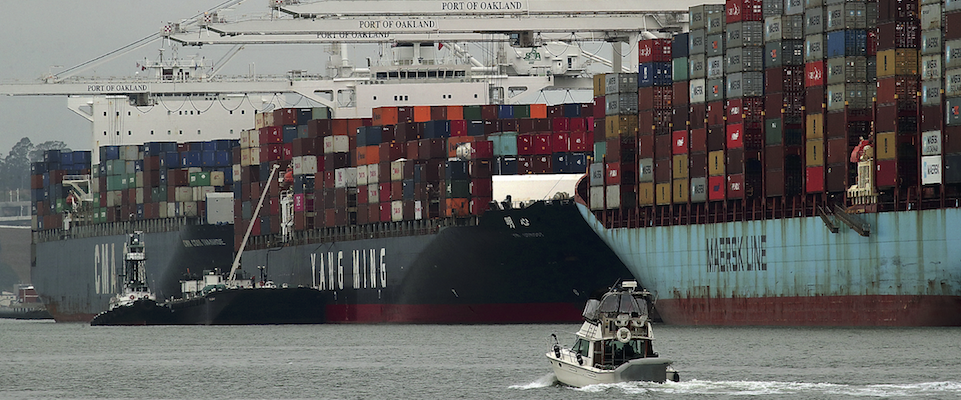My name is Michael Jordan. I was born in 1934, and for as long as I can remember, I’ve loved building things.
In the 1970s, a crane we designed collapsed in New Jersey. It had not been built with the right material. The operator cab fell, but landed on a container full of soft cheese and the operator survived.
That failure was a result of a brittle fracture. Picture a small windshield crack that appears but doesn’t grow much until—bang—it spiderwebs across the glass without warning. That happens to cranes. A crack appears, and the maintenance people just weld over it. That’s like painting over a crack in your windshield. It doesn’t resolve the problem.
My childhood in the East Bay was spent mostly outdoors. But what really stands out in my mind is getting my first glimpses of the bridges on the bay. I was captivated.
People think because a crane is metal it will bend and give you some warning. But with a brittle fracture, the atoms in the steel actually separate, and the failure moves at the speed of sound.
My name is Michael Jordan. I was born in 1934, and for as long as I can remember, I’ve loved building things.
My childhood in the East Bay was spent mostly outdoors, playing marbles in the dirt and building with whatever junk we found lying around. My parents encouraged my interests by buying me Erector Sets. But what really stands out in my mind is getting my first glimpses of the bridges on the bay. I was captivated.
As it turns out, my career has focused not on bridges but on cranes.
I came out of UC Berkeley with undergraduate and graduate degrees in engineering and entered the workforce at the dawn of the age of containerization. Prior to that, seagoing cargo was loaded by hand on and off ships on pallets or cradled in nets. Socks. Fruit. Rags. You name it. This was known as break-bulk cargo and getting it on and off board was slow going. On top of that, companies would often lose 30 percent of their cargo to theft or damage. If it was whiskey, they’d lose even more.
Containerization changed all that.
Credit goes to Malcolm McLean, who owned a trucking company back East. It was his idea to separate the box part of his trucks from the chassis, so that those boxes—the containers—could be loaded in one piece onto a ship. The containers were kept locked, protecting the cargo. And loading and unloading became many times faster. It now took only 18 hours to turn around a ship! Before it could take three weeks.
Innovation often comes with unforeseen ripple effects. When those first container cranes were built, we thought we were just helping to turn ships around faster.
It was a revolution. But for it to fully take root you also needed specially designed ships to carry those containers, specially designed wharves to accommodate those ships, and specially designed cranes to load and unload the boxed-up cargo. I was fortunate to work on all three.
The dockside container cranes we designed were the first of their kind, and they were first put to use in Alameda, L.A., and Honolulu. They stood 150 feet tall with the boom up (today’s cranes are three times larger and weigh four times as much). Instead of hooks, the cranes had what’s called a spreader, which gets lowered onto the container and twist-locks onto the corner castings. A container crane is good for lifting containers, but not much else.
Because these were the first dockside container cranes, we were not restricted by tradition. Or codes. Take, for example, codes that limit the amount a structure is allowed to deflect, or sway, under a load. Often, these codes are based on someone’s idea, not on rational analysis. We decided to simply limit the deflection to what was required for satisfactory operation, which saved a great deal of weight. The cranes swayed more than a code might have allowed, but they operated well. Even today, more than 50 years later, our criteria are still widely used in the industry.
Of course, safety also depends on how the crane is built, operated, and maintained. Some of those first dockside container cranes failed as they got older. One in Los Angeles was threatened in its youth when the wooden dock under the crane burnt down. It was suspected—but never proven—that longshoremen had set fire to it. You could understand their objection. Cranes posed a threat to their jobs.
Innovation often comes with unforeseen ripple effects. When those first container cranes were built, we thought we were just helping to turn ships around faster. We came to realize that we were helping the world to specialize and making the global economy more connected. The consequences have been both positive and negative. But they weren’t our focus. We were just trying to design things that functioned well and that were aesthetically pleasing. In that sense, I believe we succeeded.




















